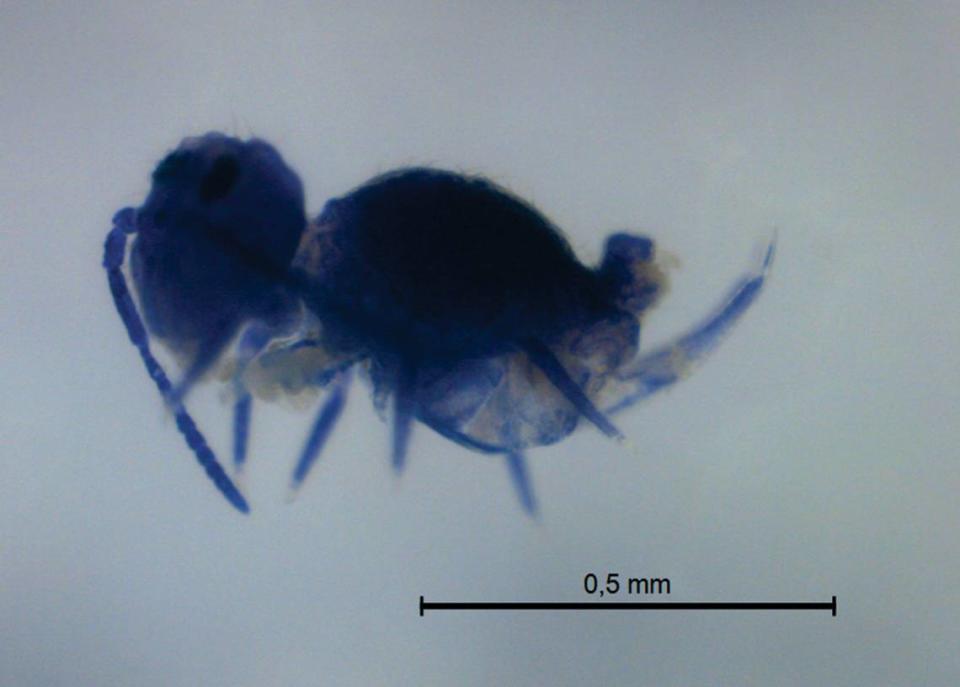A minuscule creature flung itself through sandy soil using its forked, tail-like appendage — and fell into a researcher’s pit fall trap in a Brazilian forest.
Scientists were exploring the National Forest of Palmares, searching for springtails, according to a study published Dec. 12 in the journal ZooKeys. That’s when they found four “unique” and colorful specimens in their traps.
The “pinkish” creatures turned out to be a new species of collembola: Szeptyckitheca andrzeji, researchers said. Experts examined three tiny specimens — one male, one female and one juvenile — measuring between about 0.03 inches and 0.05 inches, or about the size of a small flea.
Discover more new species
Thousands of new species are found each year. Here are three of our most eye-catching stories from the past week.
→ ‘Limbless’ creature found digging beneath rotten tree in Vietnam
→ Four-eyed creature with ‘spherical’ sex organ found in China
→ Sea creature with 328 tentacles found suctioned to rock in Japan
The small, 16-eyed creatures are “pinkish” with purple spots on their head, according to scientists. They have 14 “large” spines on the top of their head.
Their antennae are split into several segments with varying amounts of bristles on them, researchers said. Their jawbone is “normal,” and it has nine sharp, pointed teeth.
Female specimens have a “short, spoon-like” and “serrated” appendage in front of their anus, the study said.
Scientists said they named the new species after Andrzej Szeptycki, who made “important contributions to the taxonomy and systematics of springtails.”
The creatures live in the national forest, which has a “long dry season and rainy summer, with high temperatures throughout the year,” experts said. Specimens were found in soil “with some gravel on the surface.”
The researchers identified a second colorful new species of collembola from two locations in the Rio Grande do Norte state of Brazil, which is about 650 miles east of the National Forest of Palmares.
Scientists found the “dark bluish” creatures on the campus of the Federal University of Rio Grand do Norte and in the National Forest of Nísia Floresta, they said. The two locations are about 20 miles apart. Specimens were found in “forest litter covering sandy soils in shady areas.”
Four male specimens and two female specimens of the new species known as Szeptyckitheca cyanea were examined, researchers said. The species is named after the Latin word for dark blue, “cyanea,” because of their coloring.

These tiny creatures also have 16 eyes, and specimens measured between about 0.02 inches and 0.03 inches, according to experts. They have 18 “strong and erect” spines on the top of their head and “normal” mandibles with nine sharp, pointed teeth.
Female specimens of S. cyanea have “long, slightly curved” and “serrated” subanal appendages, the study said.
‘Translucent’ creature with teeth on its back found in China cave. See the new species
‘Color-changing’ creature with ‘tubular’ genitals found in Brazil is a new species
Eight-eyed grassland creature with ‘fanglike’ sex organ turns out to be new species


